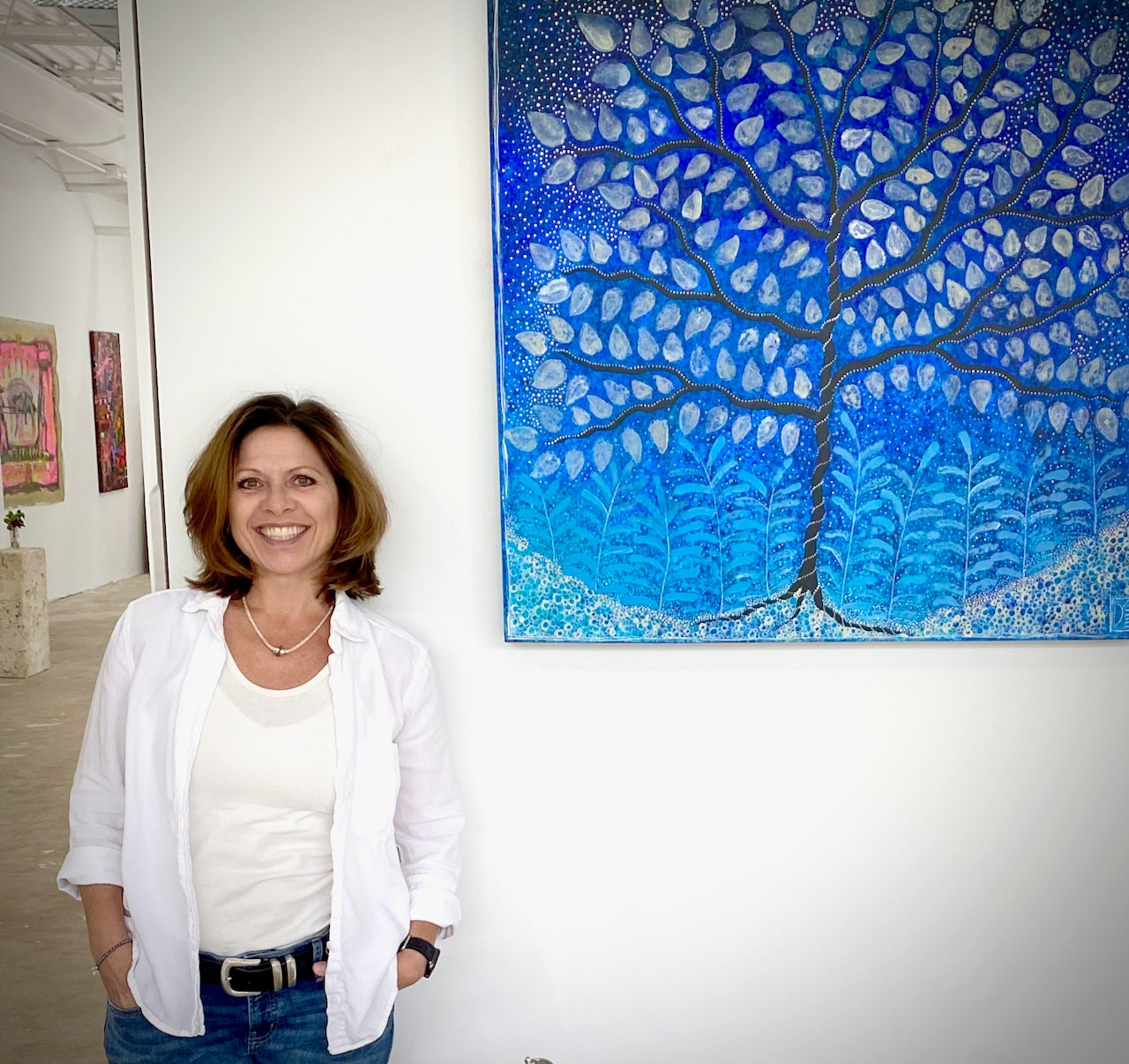We were lucky to catch up with Dar James recently and have shared our conversation below.
Hi Dar, thanks for joining us today. We’d love to hear about a project that you’ve worked on that’s meant a lot to you.
My family and I had a very challenging Covid year. Pretty much overnight, my entire schedule of outbound teaching, shows and exhibits were canceled, my partner lost his job, the house we were living in and had hoped to buy was sold out from under us and my children’s father died of cancer, all while the world was collectively reeling from this serious public health emergency. There were lots of days that I couldn’t stop crying and it was really difficult to create, but I knew that I needed to come up with a way to continue to earn an income and, since everyone was gathering online, I set out to develop a big, three month long, online course called Circle Celebration.
The circle has always been my favorite shape–it is a soft shape, without edges, symbolizing wholeness, unity and continuity, and it shows up in my work a lot. Of course, I’m not the only artist who loves circles! You can jump onto a site like Pinterest and see the myriad ways this universal shape can be expressed, which is mind blowing to me, really. So, in the midst of all this discomfort, in my own life and in the world, I was thinking not just about how to change professional direction, but also about how to help others, particularly those who wanted to be involved in some sort of creative outlet, feel comforted.
One of the things I’ve noticed as a teaching artist is how much my students struggle with the identification and acquisition of a personal style and, because so many courses are project based, I think it can be hard to identify style when we are working in a step by step fashion. Circle Celebration was a partial departure from the more project oriented way I’d been teaching for years and a real exploration into more exercised based experiences that focus on one approach or medium at a time, using the circle as a starting motif or symbol. In my own work I’ve found that repetition and exploitation of something is generally what leads me to the small breakthroughs that have become my own signature style. Being able to put this philosophy into action with this course felt really true to how I’ve developed my own body of work over time.
Circle Celebration did a few things that became really meaningful, both at the time and in hindsight. First, it gave me a project to focus on and the potential to create income during a time where other things had fallen away and zeroed out. Second, it kept me interacting with others during lockdown to both create it as well as to experience it once it was launched. I was fortunate to have an awesome assistant who helped me produce it and we had a very synchronistic working style that was effective for a course of this length with this much content. Third, it allowed me to experiment with a different teaching style, one I would continue to incorporate in future Zoom workshops as well as in-person events and the feedback for this, especially for a particular kind of student, has been really positive. Finally, the circle shape that I love was brought to the forefront so that I continued to use it for my 100 Day Project in 2021, which became the artwork and the inspiration for a deck of 100 motivational cards called The Inner Circle that came out earlier this year. I guess you could say it’s come full circle.
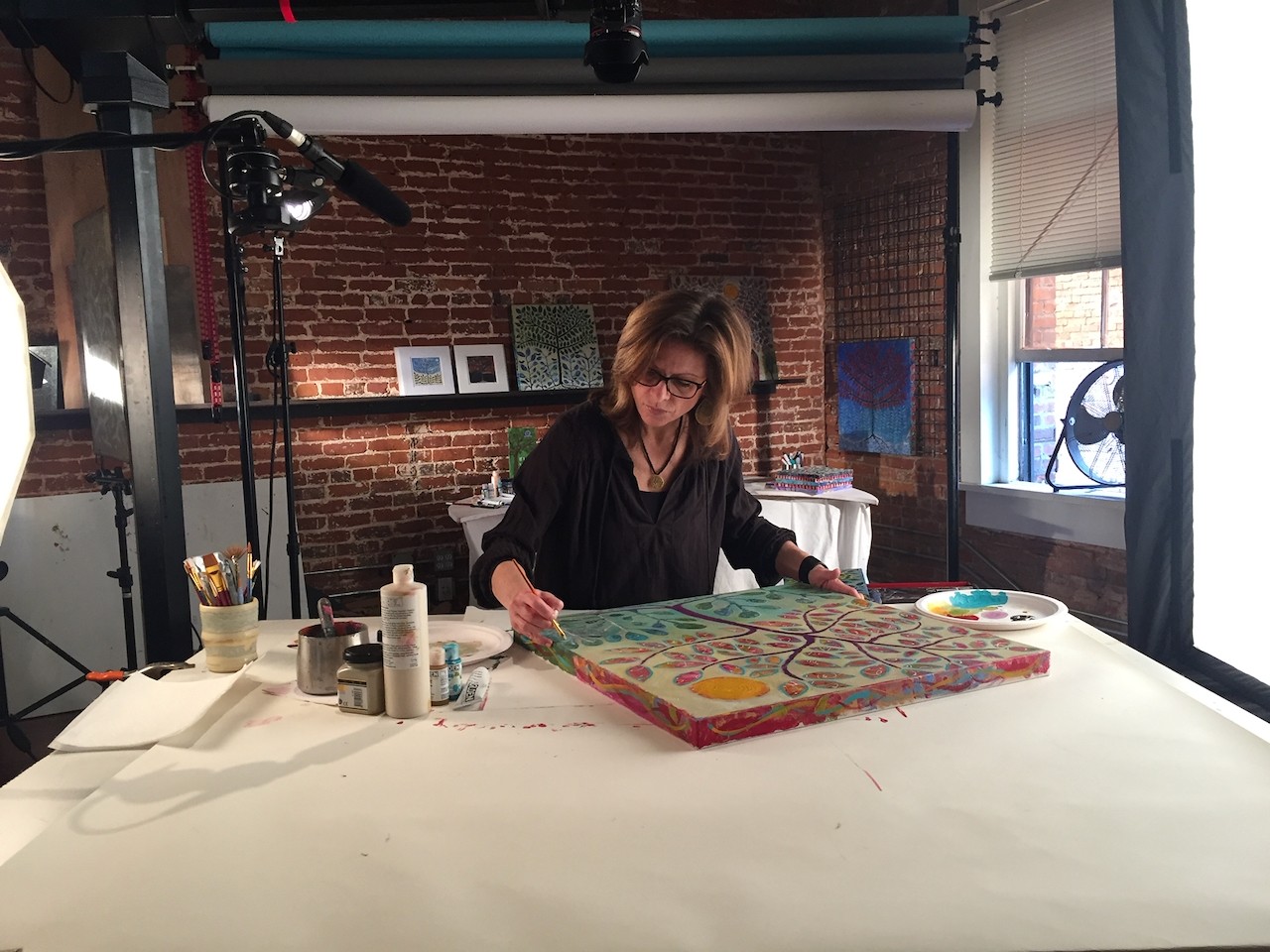
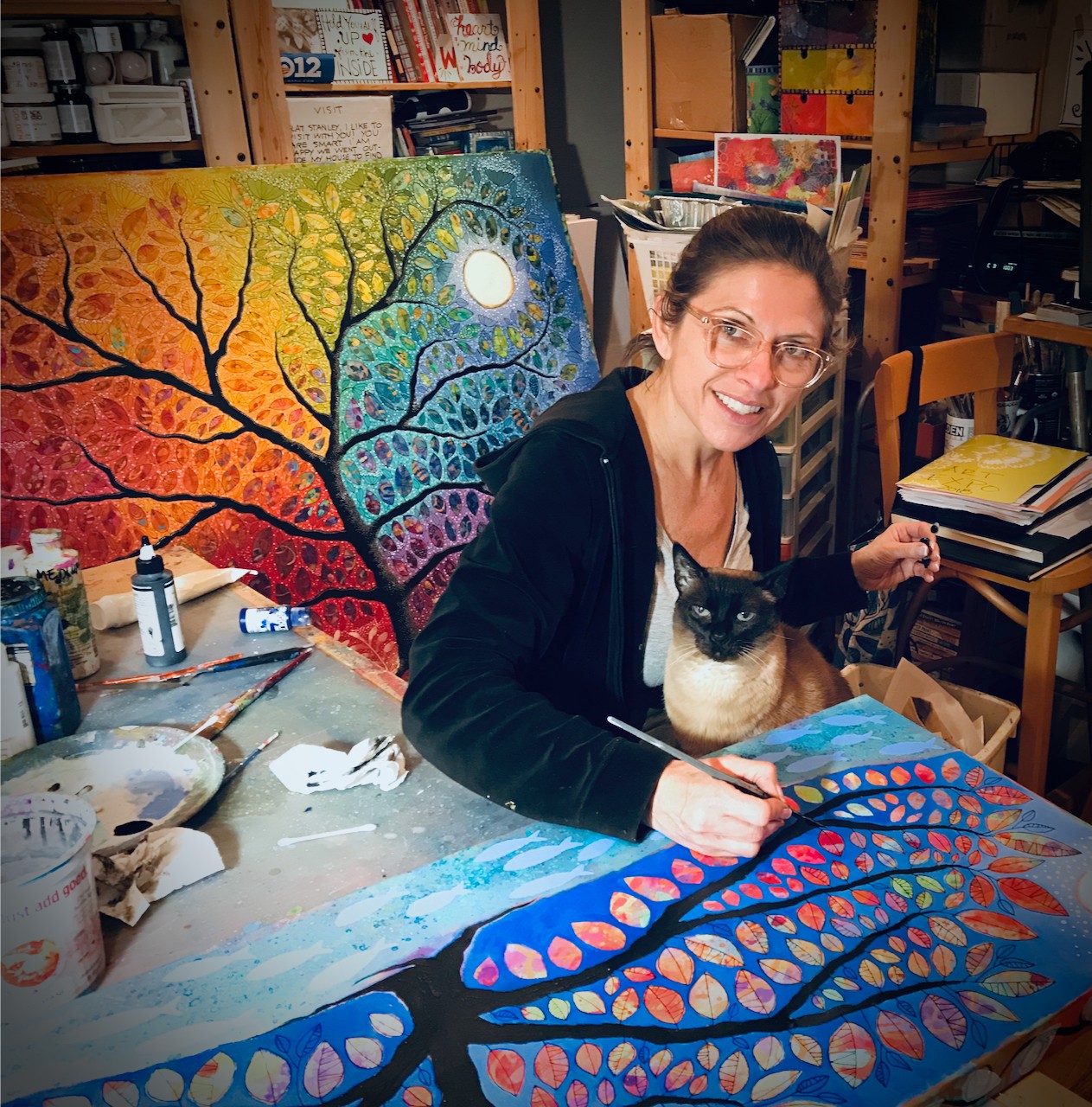
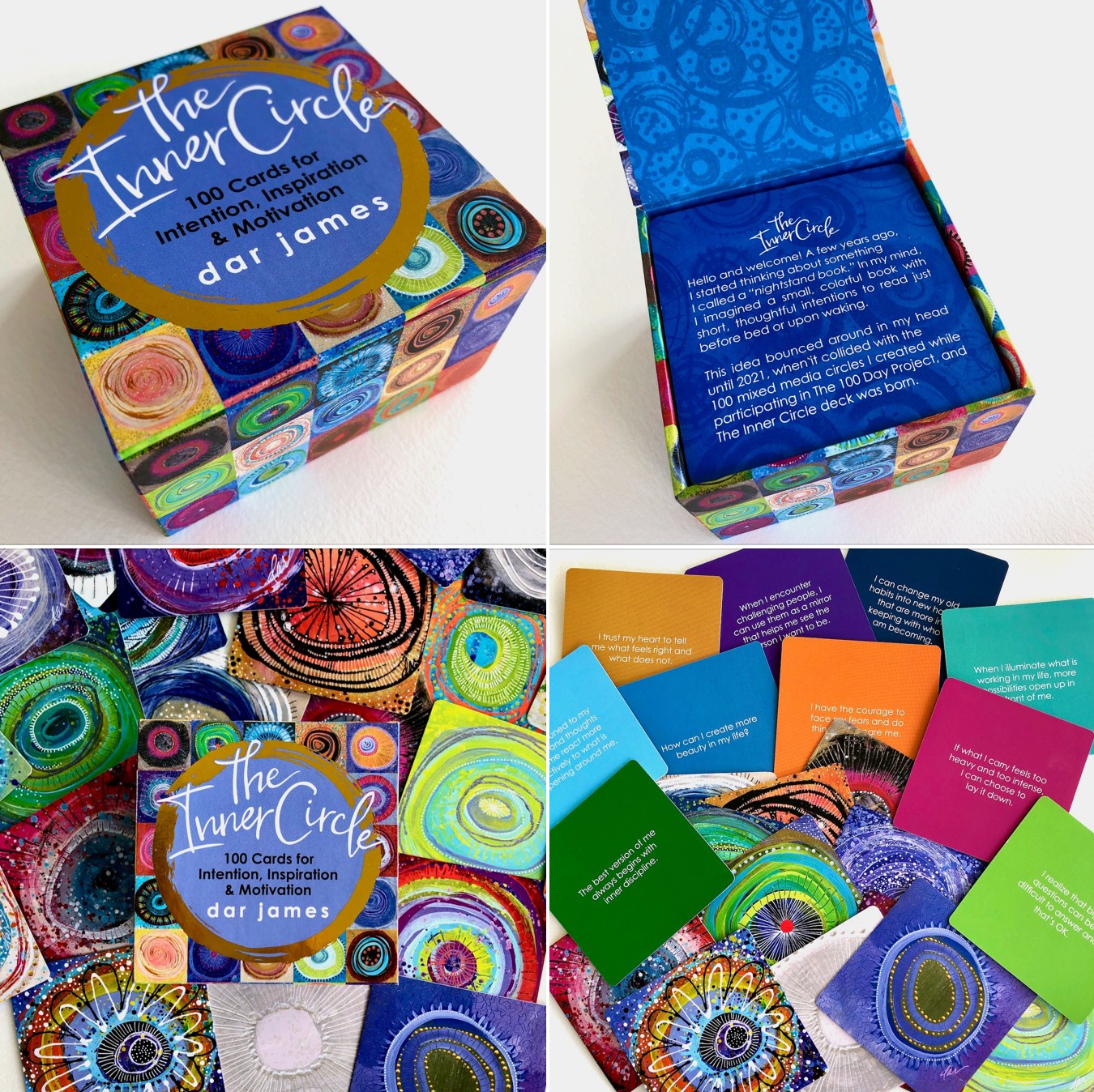
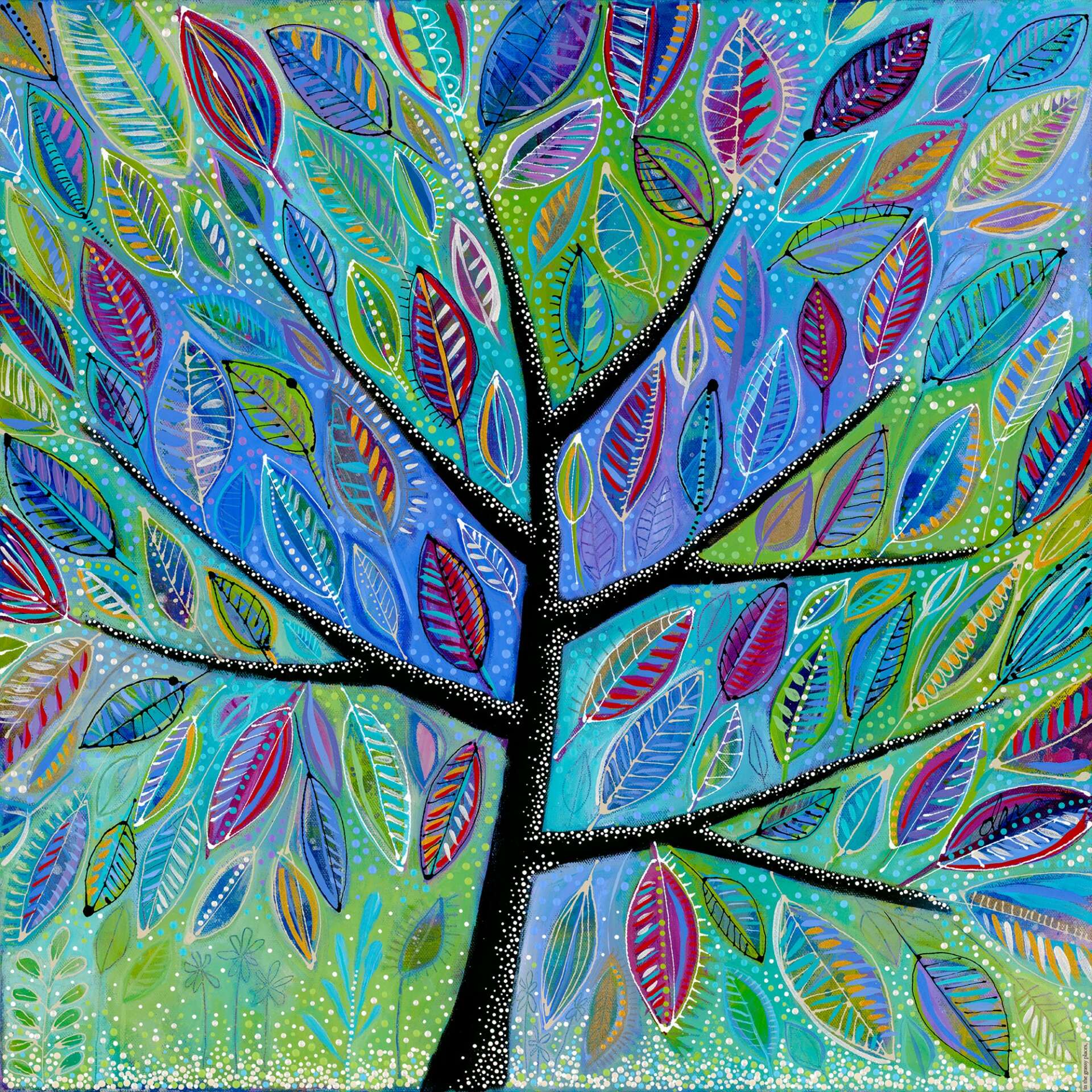
Awesome – so before we get into the rest of our questions, can you briefly introduce yourself to our readers.
I consider myself a little bit of an ‘accidental artist.’ Although my father was an artist, I did not expect to be one. My BA in Creative Writing was completed at the University of Missouri; graduate work included a secondary education certification in Language Arts and, after a brief stint as a high school teacher, I got married, and had two sons. During this time, I lived in rural Ohio, and our days were spent in a busy balance of the domestic and the curious. Diapers, naps and laundry one moment, and nature walks, garden discoveries, finger paints and homemade clay the next. It was a challenging but magical time and, as it turned out, the silly, little art projects I set up for my young sons in my early motherhood would be the beginning of my own career as an artist.
We ended up on the east coast, in central New Jersey, and I began doing small shows and art festivals with the work I’d been creating. While at these events, I connected with other artists and eventually became part of a really supportive community of creative people that exists to this day. Early on, I’d developed a recognizable style in cut paper collage and, in 2003, combined my creative writing and art, and my first of six, self published children’s books, ‘I Love The Night,’ came out. Becoming a children’s book author and illustrator was a real turning point in my life as a professional artist. My titles enjoyed mainstream reviews from Kirkus and Booklist, awards from educational organizations, licensing contracts with Children’s Book of the Month Club and Houghton Mifflin, placement in both Borders and Barnes and Noble, as well as gigs as a visiting author and illustrator and speaker at education conferences, all of this leading to many other professional opportunities.
At the time of the 2008 financial crisis, I’d begun to focus more on painting and less on collage, more on art and less on illustration. This was serendipitous because, at this time, the budgets for arts in education, whether at schools or conferences, instantly bottomed out. Over the next decade I put my energy into discovering an audience for my paintings and developing playful art workshops and retreats for adults. In October, 2016, I trained as an Artist Educator for GOLDEN Paints, which opened up the endless ways to work with acrylic paints and mediums, and I’m still experimenting with all this stuff and creating new classes to share with others.
The natural world is what inspires me most— leaves, flowers, rocks and the things of the Earth— but the things I paint are things of my imagination. The signature dot work I finish with is very methodical and meditative for me, but I also mean it to be illuminating and magical— we all need a little magic in our lives. People tell me that my trees are soothing to look at and that makes me feel really good because making art was something that came to me when not all things were clear, and it continues to be the place where I feel both grounded and enchanted. Art has super powers like that.
How did you build your audience on social media?
Because my work in the arts started before Facebook or Instagram, I learned early on that I needed to make and keep a connection with my audience wherever I was and, to this end, I started collecting addresses (at first, they were snail mail) and sending out invitations to the people I’d met and connected with whenever I had a show or an exhibit. Maybe this sounds old fashioned, but I believe that a good mailing list is gold for an artist and, during lockdown, I was surprised to find out how many of my colleagues had not been keeping one because that list of mine was truly what saved me. When my online class was ready, or when I decided to do a virtual show, I had thousands of people with whom I’d been communicating regularly for over two decades. Some of my subscribers have been on my list since I was hand addressing postcards back in the day! It’s the communication part that matters. If you believe, as I do, that your art is communicating something, and that people who love it and want it around them are getting a piece of your heart and soul, it’s critical to let them know you. The real you. And that is about storytelling, which is what I discovered from the get go at my very first events. Because, back in the mid 90s, people couldn’t go online and read or hear about me. It was up to me to tell them some kind of a story–in person– and then keep that connection going.
I bring all of this up to say that, somehow, probably more by habit or accident, I ended up approaching social media in a very similar way as I do my mailing list, that of making and keeping a connection. There are so many lists of ‘how-to’ when it comes to social media– what days and time to make a post, how often, what makes a good lead, video or not video, how to get more followers, blah blah blah. It’s dizzying, really. I’ve never had a zillion followers on any platform and I post when I feel like I have a story to tell or something of value to share. My approach to business, which includes social media, is one of quality versus quantity. Being able to connect authentically with my audience and my online community is in keeping with who I am in real life.
Facebook was and is my favorite and most effective platform and I find Instagram less warm, less personal, but regardless of what any artist uses, I think being able to tell a story about ourselves that doesn’t sound trendy or phony is key. It’s probably true that I’d be looked at as an ‘oldie’ in the way I use social media but, to that I’d say, it works for me.
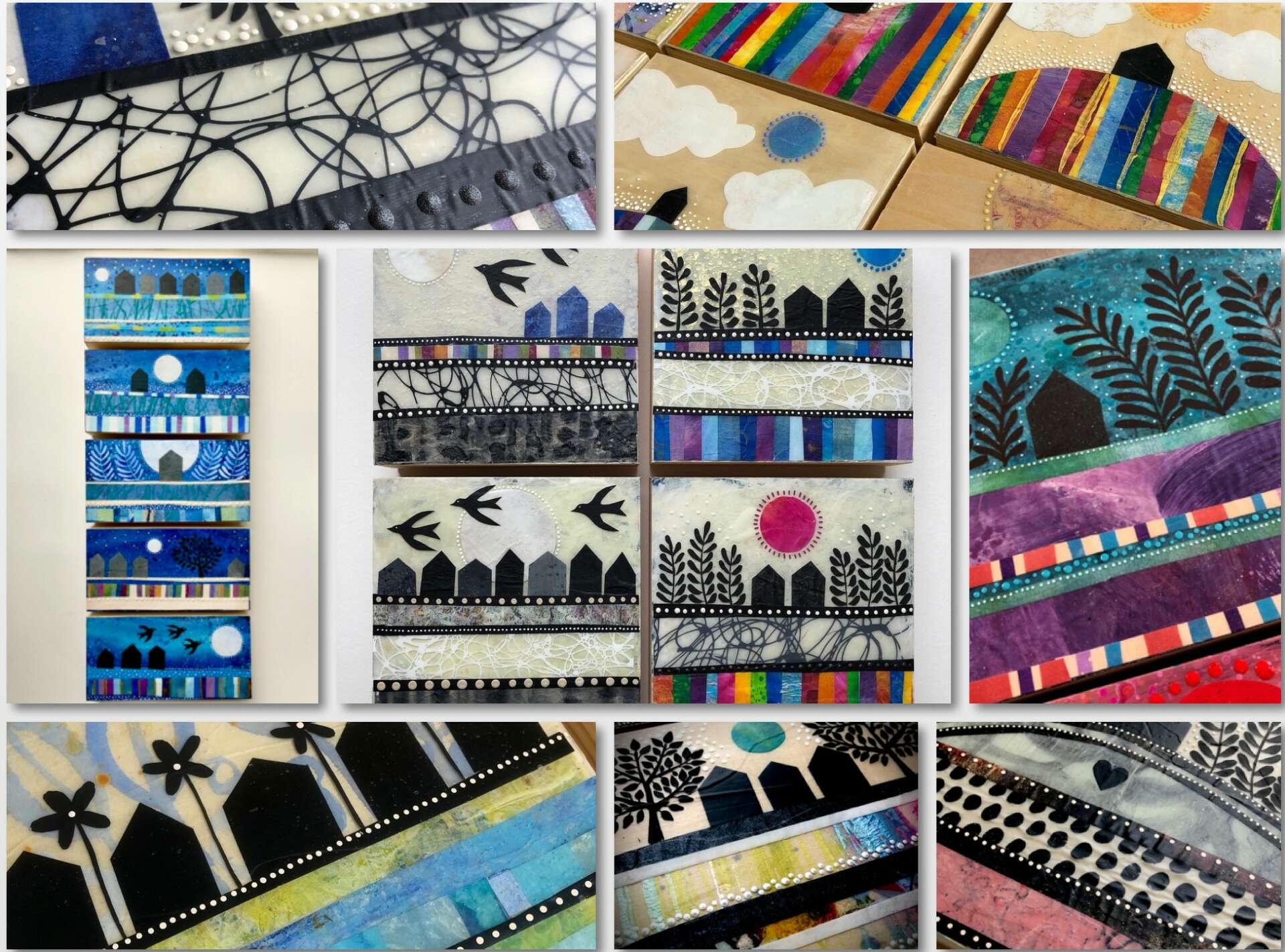

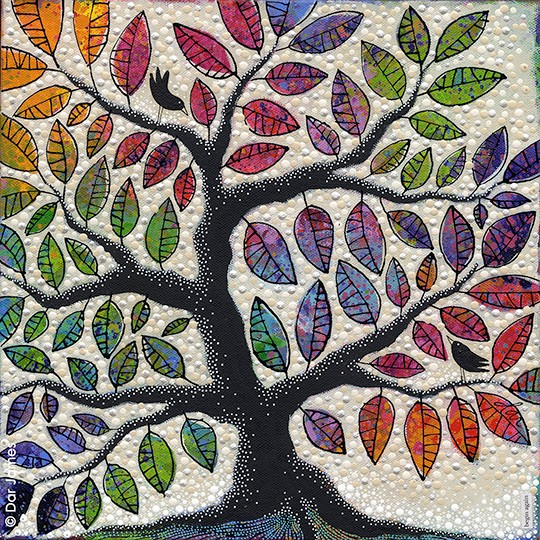

Can you share a story from your journey that illustrates your resilience?
Is it resilience that makes an artist? That’s kind of a trope, I think and it’s closely related to that stupid stereotype, the ‘starving artist’ which I despise so much. Anyone who chooses this as their professional life and sticks with it, day after day, through all the rejections, through all the money we lose to projects that don’t go as well as we’d planned or just through the daily discipline and organization it takes to create a career out of thin air, is resilient. There’s a funny thing that’s happened to the arts with so much focus on sharing everything on social media and the prevalence of online art classes and that is an attitude that says, everyone can be an artist! This is going to sound very cynical but, while I believe anyone can make art and will benefit from doing so, I don’t think everyone can be an artist.
Whenever I teach beginners who dream of an artist’s life I tell them this… If you have people in your life who, whenever you make something tell you, you could sell that, tell them to stop (and if you are one of those people, stop saying that to creative people!). Because selling a thing is the easiest thing about being an artist; it’s the foundational knowledge of one’s craft, the learning and unlearning of what will propel one forward to the next level, the ability to notice and accept opportunities, and the lonely, day to day solitude of creating a solid and authentic body of work that matters. And these are all hard things, things that will separate the ones who can stick with it long enough to see the seeds they planted blossom into a career, those are the creative people who are resilient enough to tell the tales.
Contact Info:
- Website: www.darsworld.com
- Instagram: indarsworld
- Facebook: https://www.facebook.com/darannjames/
- Other: Vimeo https://vimeo.com/darjames


